North Mangum St. remains one of Durham's most pleasant residential streets north of Geer Street. During the late 19th and early 20th centuries, the residential portion of the neighborhood was still in close proximity to downtown, with large houses along the 400, 500, and 600 blocks of the street. During the early 20th century, with extension of the streetcar line north to the beltline railway, the neighborhood grew northward.
This photo is taken facing south on Mangum at the intersection with Hunt Street - note the streetcar line running down the center of the street. 521 North Mangum is in the immediate foreground.
(Photo courtesy Durham County Library)
In 1919, the inhabitants of the 500 block of North Mangum were:
West side:
501 CA Jordan
503 Mrs. Fannie Briggs
505 AA Holder
507 Mrs. Rowena Rigsbee
511 RH Rigsbee
515 Mrs. Ada Smith
519 BH Thomas
521 LG Cole
522 MD Bright
523 Theo Thompson
East side:
502 HD O Briant
506 WF Freeland
508 SP Mason
510 Mrs. LR Holloway
512 WA Fulford
518 TH Christian
520 Mrs. EC Bernard
522 MD Bright
526 Vacant
Bird's Eye view looking northeast at the 500-600 blocks of Mangum
1937 Sanborn, west side- gas stations had begun to proliferate on formerly residential corners.
1937 Sanborn, east side.
By the 1950s, commercial expansion had begun to alter this block considerably, with progressive teardowns for commercial development. No longer a desirable location for residents who could maintain large houses, large houses on the edge of downtown either were abandoned or became rooming houses.
1959 aerial shot of the 500 block of Mangum St. - 503 and 505 have been torn down, and 519 N. Mangum is in the process of being torn down. 50 years later, it's still a vacant lot.
Best way to bias your survey in the desired direction - back up traffic for miles asking people questions about whether the Durham Freeway is needed. I'm not joking. 507 and 511 N. Mangum are in the background.
"Expressway Survey, 07.08.60" (Courtesy Herald-Sun)
By the 1970s, the block had taken on an appearance not dissimilar from today. Three houses remained in the entire 500 block (both sides) - single story new construction, parking lots, and vacant land predominate.
1976 aerial looking southwest towards downtown.
2006 view of the west side of the 500 block - two houses remain.
The Mangum 506 project aside, this block is near its lowest and worst use. I'm not usually one to advocate for moving houses, but 521-523 North Mangum should be moved to vacant land on Cleveland St. or somewhere else nearby - abandoned for ~5+ years now, and owned by the church across the street, they are not going to survive in this location.
521-523 N. Mangum and vacant land beyond.
As I've previously written, this corridor needs help. While I'm certainly glad that the neighborhood commercial districts (such as Little Five Points one block to the north) have garnered increased attention from the city, I maintain that the focus is skewed. While there is attention on downtown and these districts, the most problematic areas are the gaps in between these areas: the 500-600 blocks of North Mangum, the 400-500 blocks of West Main, the 300-600 blocks East Main, the 200-600 blocks West Chapel Hill, Angier between Alston and Clay, Fayetteville between East Main and Lakewood., etc.
A combination of bad road infrastructure, immobile ownership - whether it be Durham County or people who don't care to improve their property, and difficult economic conditions make any expectation of purely market-driven improvement in these gaps suspect. Will any entity step up with proactive solutions to improve these broken linkages between the important neighborhood commercial nodes and downtown?
Note: a small portion of this post was originally written in September 2006; it thus retains the comments from, ahem, the "Svenian Period" of Endangered Durham
This property was demolished in November 2012.

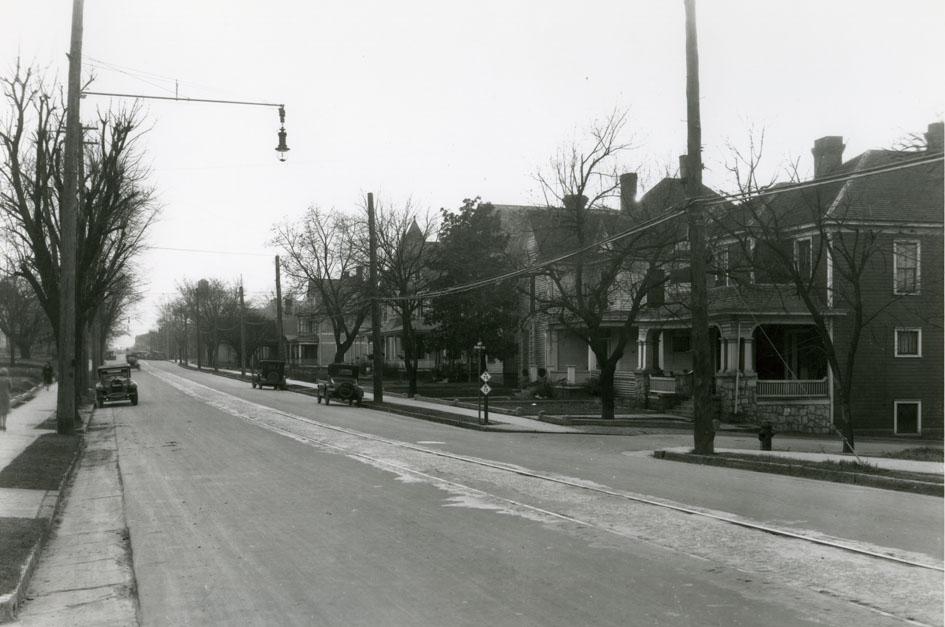

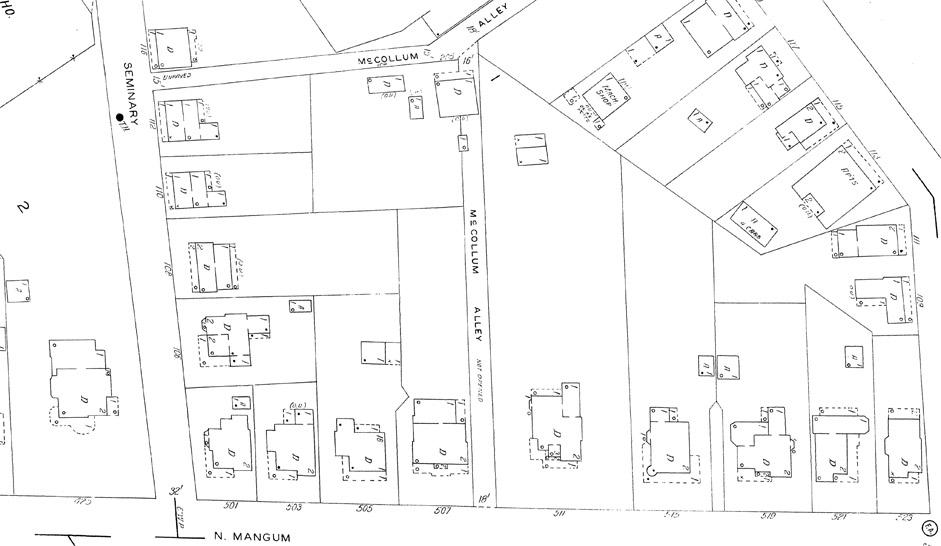
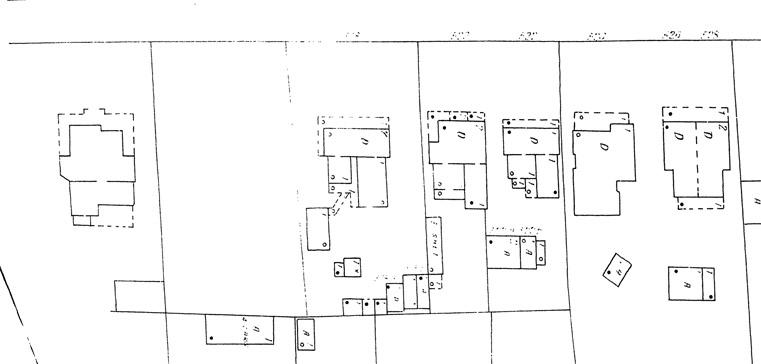
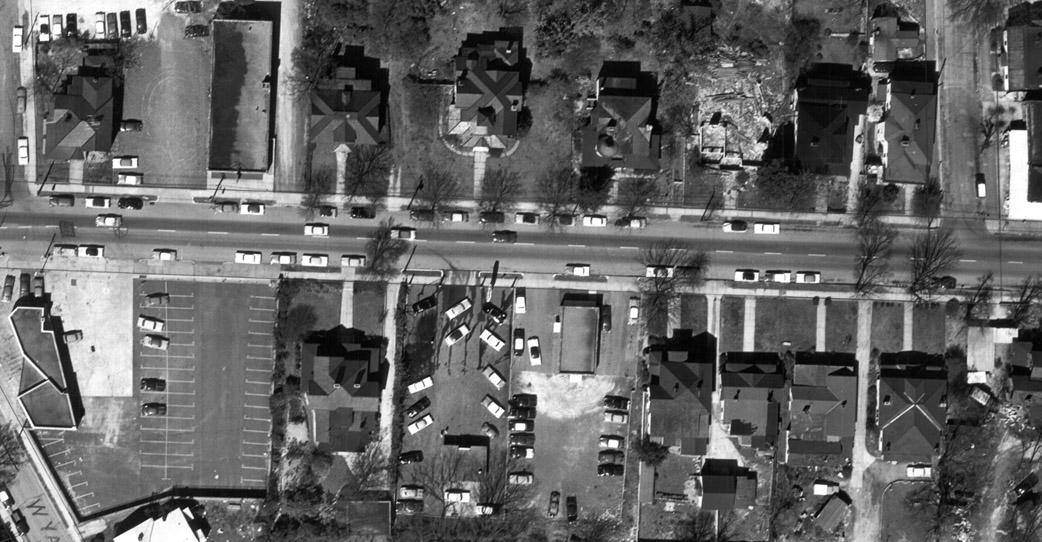
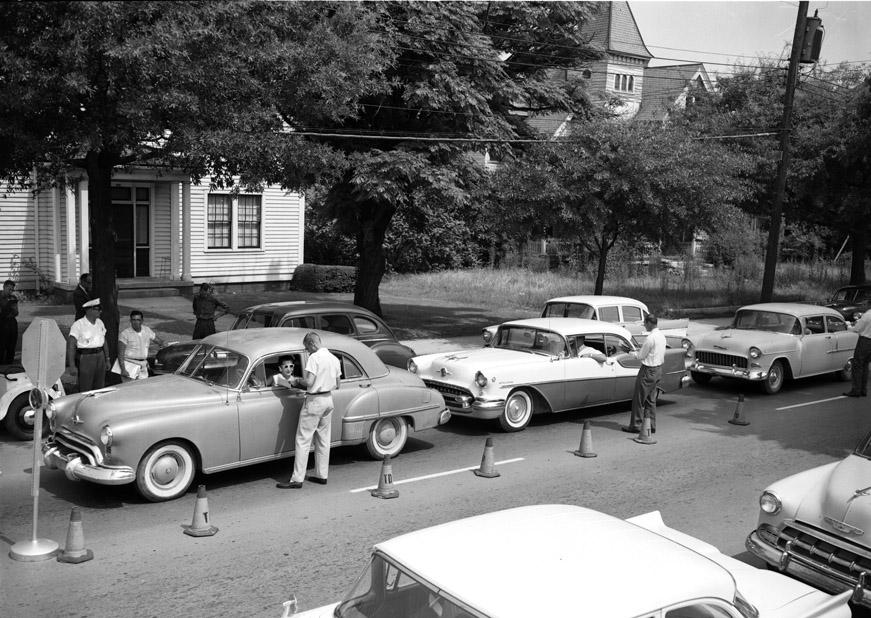
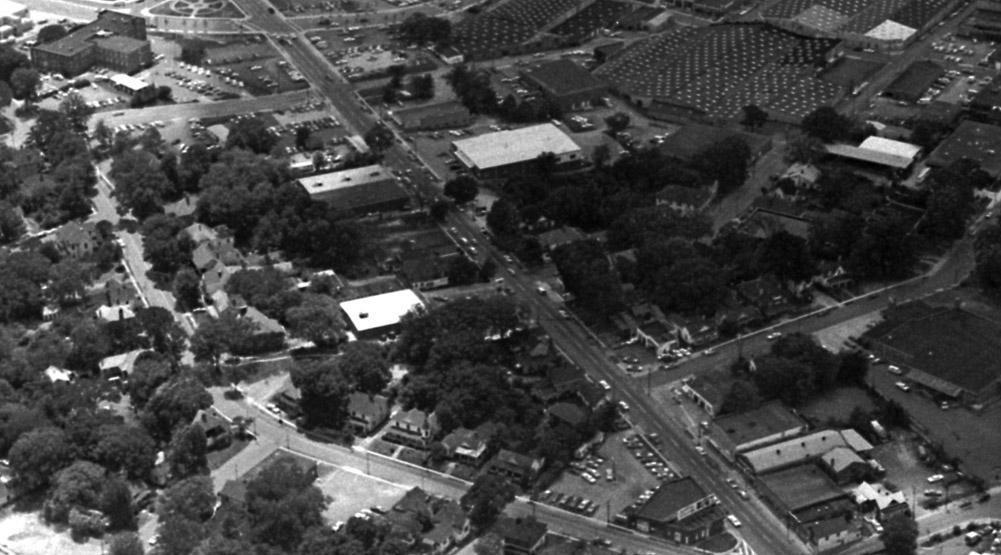
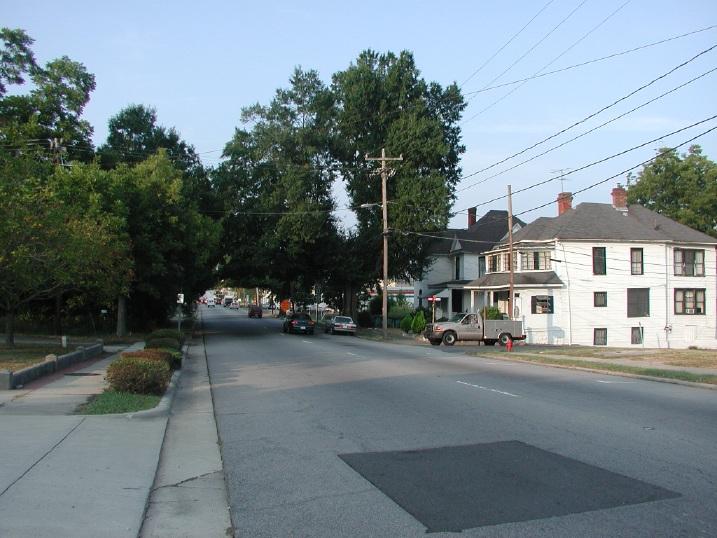
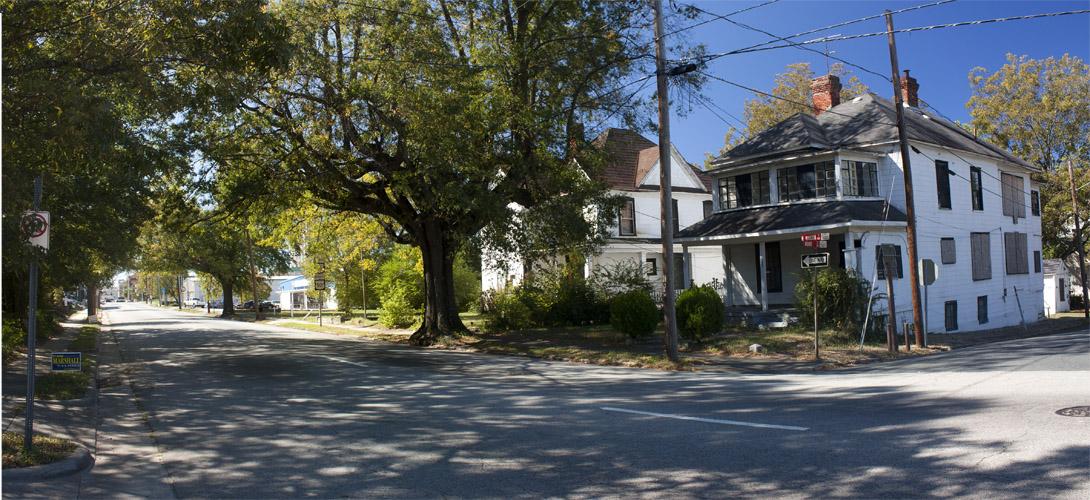
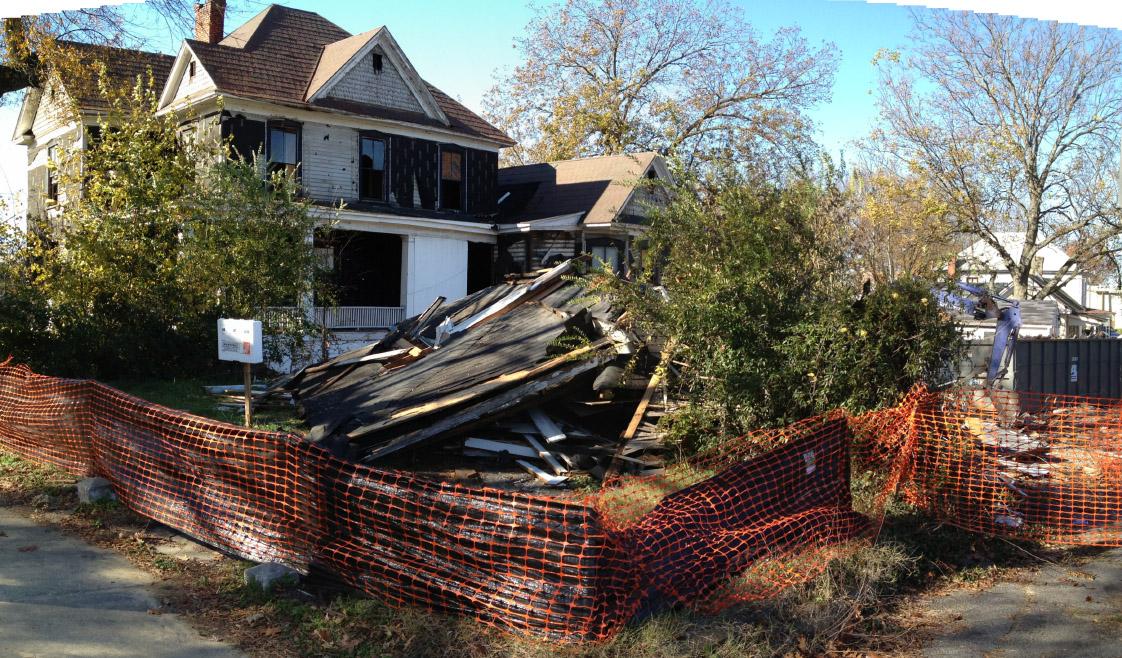
Comments
Submitted by Joe (not verified) on Wed, 8/30/2006 - 6:42pm
By "Little Five Points" do you mean the Mangum/Corporation/Cleveland intersection?
For some reason, I rarely use Mangum Street, despite living two blocks from it. I still like the stretch you photographed: perhaps it's all the open space. :/
Submitted by Sven (not verified) on Wed, 8/30/2006 - 7:19pm
Exactly. I think the stretch I photographed for today is helped a lot by the mature trees (despite the giant hole in the middle of one for the power lines). A lot of the areas that interest me are in the "moat" between more established neighborhoods and downtown - areas that have sustained damage from various sources and continue to sustain damage. I'll talk more about LFP tomorrow, but the city recently tore down a house on Corporation, and wants to tear down buildings at LFP.
Submitted by Eric (not verified) on Thu, 8/31/2006 - 1:20am
Do you have any old photos of 909 North Gregson? Joe and I used to live there.
Also, I'd be very interested to see any pre-fire photos of Epworth dorm on East Campus you may come across.
Love the site!
Submitted by Sven (not verified) on Thu, 8/31/2006 - 1:58am
Thanks Eric. I haven't seen any old photos of 909 N Gregson; it is a cool house. I used to pass it every day on my way home from work.
The only old picture of Epworth I know of is in Joel Kostyu's Durham book, originally from the Duke Manuscript Dept., but not part of their digitized photography. It isn't a great picture, but it gives a sense of the scale of the original building.
Submitted by Joe (not verified) on Fri, 9/8/2006 - 4:56am
One thing that's struck me about Durham is lots of the city seems to be transitional zones. It seems like Durham has lots of neighborhoods where going 3 or 4 blocks in the "right" (or "wrong") direction will put you in an area of a totally different character. Maybe it's my imagination, or perhaps I haven't traveled enough.
Submitted by Sven (not verified) on Fri, 9/8/2006 - 11:27am
Joe
I think you are very right about Durham's variation; I think, historically, Durham grew rapidly in the period from 1880-1920, but still needed to be relatively compact for transportation reasons. The economic and racial divisions tended to occur geographically based upon terrain rather than distance. Wealthier residents built on higher, flat ground while poorer residents built on hillier/lower terrain. You can see this as you move directly east from this part of Mangum St. to Queen, Oakwood, and Primitive. This area, known as 'the Bottoms' , was fairly equidistant from downtown, but altogether different economically. (Interestingly, this didn't always fall along racial lines - Hayti, centered at Fayetteville St. and Pettigrew was economic high ground for the segregated African-American community.)
While this overall pattern isn't exactly the kind of 'mixed-income' neighborhood planners might hope for, it is certainly spatially more mixed than Treyburn vs. East Durham.
Changes since the 1960s have destabilized this pattern though, by 'suburbanizing' neighborhoods such as Old North Durham and Morehead Hills.
Thanks for your comment, and I really appreciate you linking my blog.
Submitted by Michael Bacon (not verified) on Mon, 11/1/2010 - 7:38pm
The two remaining houses on the block are owned by Nehemiah Christian Center, who apparently had some interest in renovating them, but discovered that both had experienced electrical fires. Both are highly salvageable, but require significant work that was too much for the church to take.
I've spoken with Nehemiah, and Pastor Herb Davis indicated that he would be happy to have someone move them off the site to restore them elsewhere.
Submitted by John Martin (not verified) on Mon, 11/1/2010 - 11:48pm
@Gary: I don't understand why you think they should be moved. Why can't they be restored on site?
@Michael: Did you ask this church why they didn't just put these houses up for sale if restoring them is too much for them?
Submitted by Gary (not verified) on Tue, 11/2/2010 - 12:31am
John
I'd love for them to be restored on site. But they are owned by the church across the street, which means they'll be a parking lot someday. They are abandoned and deteriorating, and even if the church agreed to sell the land (which they won't,) nobody with enough money to bring these back from the point they've been beaten to is going to invest in them as two houses surrounding by all of that vacant land, parking lots, and unknown.
Whereas, on Cleveland St., one block away, they would help bolster a group of slightly less abused houses which are few in remaining number, but enough to remain a neighborhood.
I'd love to be proven wrong, but I feel confident that eventually either the church will take them down or NIS will, given how long they've been abandoned/run down. I don't suggest it lightly.
GK
Submitted by Michael Bacon (not verified) on Tue, 11/2/2010 - 6:54pm
John -- the church is interested in the property, not for parking, but for (I think) eventual church expansion. Nehemiah has expanded to take all of the old storefronts in the building it occupies, and at the very least wants to build fellowship space across the street, and would in fact I think prefer to build a new edifice including sanctuary and fellowship space on that side of the street and leave the storefronts entirely.
Pastor Davis told me that they had looked at renovating the buildings for sort of church-owned housing for their members, but because of the lack of a historic district along Mangum, there were no tax credits to be had, and the financials were simply impossible.
Expecting them to stay extant and residential in that spot is, to me, unreasonable. I don't think that if Nehemiah sold them that they would end up becoming single family houses. I'm pretty sure that would just lead to them getting leveled faster. (Nehemiah has at least secured them to the point that they aren't deteriorating quickly.) They are the last two detached houses south of Corporation, and even if they stayed up, they'd get chopped up and turned into offices.
I'm trying to sort it out, but I *think* if they're architecturally appropriate, moving them to Cleveland would trigger historic tax credits, making them much more financially viable.
Submitted by Anonymous (not verified) on Tue, 12/28/2010 - 7:33pm
The church Did own Public Hardware, and smart of the owner of Public Hardware to buy another property before the church desided to level the building. If you go to Public Hardware they have a few News Paper clippings of the store, or you can check out their Facebook page for these Pictures. At the time Public Hardware moved there was not enough time or money to make a building look old and non commerical industrial.
Submitted by Jonathan (not verified) on Tue, 9/11/2012 - 11:16pm
Looks like demolition on these two started either today or yesterday. It's a shame.
Submitted by Jaya Paras (not verified) on Tue, 11/13/2012 - 1:00pm
As of today the house on the corner is now a big pile of ruble aned the second house is next. SMH I just hate to see things like this!!
Add new comment
Log in or register to post comments.